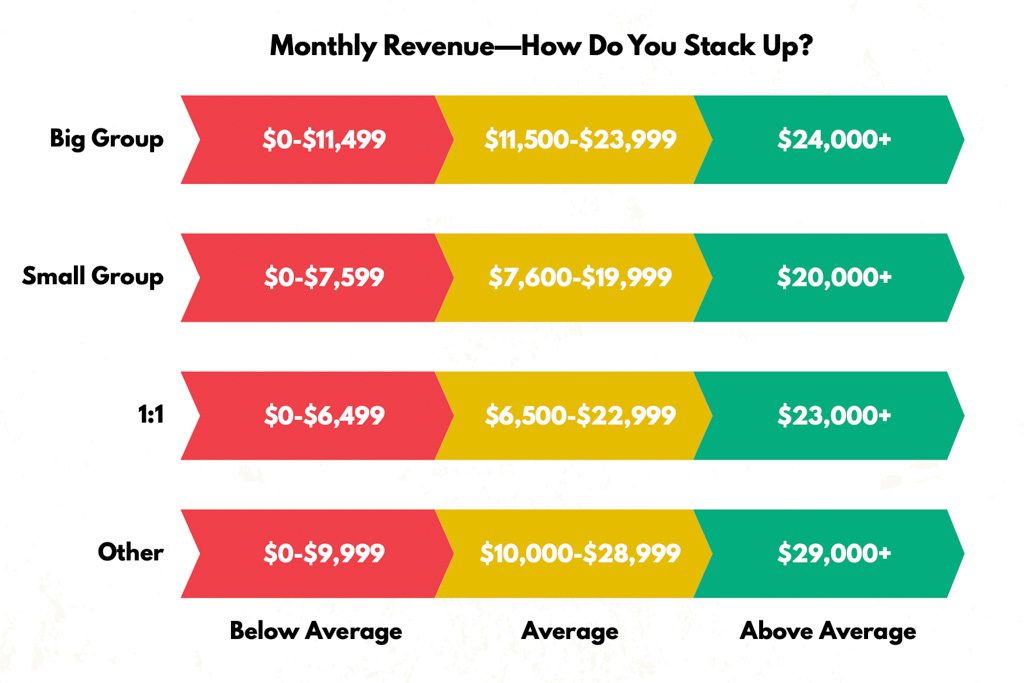You didn’t start a gym to learn accounting. Neither did I.
You started a gym to help people. Me, too.
Coaches and gyms are needed more than ever. For the first time in history, human lifespan is shortening. We’re getting sicker and weaker as we age—for many, the last decade of life is the worst decade. Our problems are now problems of abundance: We have too much couch time, too much distraction, too much sugar. We have more knowledge than ever before, and we’re getting sicker.
The solution isn’t another fitness book about diet. The solution is coaching. And every year, 10,000 new personal trainers and coaches and gym owners join the movement.
But every year 9,000 of them quit. They don’t quit because they’ve lost their passion, and they don’t quit because they’re burned out or bored.
They quit because they’re out of money.

Most of us are first-time entrepreneurs. We know we’re good at coaching. We’ve probably had big health transformations ourselves and want nothing more than to help others do the same.
But the skills of a coach aren’t the same as the skills of a gym owner. The best coaches in the world still sometimes quit because they fail at business. Many gym owners make less than they would as coaches, and they eventually quit to get jobs selling real estate or life insurance.
How do we keep coaches and gyms in business long enough to change thousands of lives and fulfill each owner’s purpose?
We have to change the industry.
We have to learn from each other’s wins and also from each other’s mistakes.
We have to know the industry averages and fight to raise them.
We have to take the best practices from the top gyms and copy them in our own businesses.
All that starts with measurement.
Get our 2024 “State of the Industry” report here.
Science, Not Myths and Opinions
How do we know who to copy?
How do we know which gyms are doing the best?
How do we know whose strategies will work for our gym?
After we measure, we can form a hypothesis: “Hey, gym owners who ask for referrals get more clients. Maybe we should focus on that.”
Then we can test the hypothesis ourselves: “I’ll try asking for referrals more often.”
Then, if our best guess is true, we can repeat it, tweak it and try to do it better, all the while measuring and tracking our results.
This is how science works. And good business is a science, not a guessing game.
One problem, though: You can’t turn your gym into a test tube.
Skipping to the Correct Answer
Every time you try something new—even changing your programming—you create friction in your business. People hate change. So you must test your new ideas sparingly or people will quit. Every mistake can cost you money—and some mistakes can be fatal.
This means very slow progress, lack of improvement and often paralysis. What should you be charging? If it’s just you out there, you don’t know. And if you guess too low, you might be too scared to fix the problem by raising your rates.
The solution is to collect the knowledge, lessons and numbers from all gyms, learn from others’ mistakes and triumphs, and grow far faster than you could by trial and error.
The solution is to connect gyms and share this knowledge so that we’re no longer alone. This is how we build a nation of gym owners instead of 10,000 disconnected islands. This is how we build on the collective wisdom, kill the old myths and advance the industry instead of staying in the dark ages of ignorance and poverty.
Annually since 2020, we’ve been publishing the critical numbers gym owners need to build better businesses. Before that, the data didn’t exist and myths ruled the industry.
Now we have the largest, most comprehensive data set in the world—really, the only valid data set. And you can use it to grow your business.
This year, I’m giving you more than just the numbers. I’m going to tell you if your business is strong and healthy or if it could use improvement in a certain area.
You’ll be able to look at each metric and compare your gym against the averages. Here are the metrics:
- Revenue
- Client headcount
- Average revenue per member per month (ARM)
- Length of engagement (LEG)
- Lifetime client value (LTV)
- Return on expenses (ROI) for staff and fixed costs
- Profit
- Effective hourly rate (EHR)
And here’s one of more than a dozen scales we created to help you evaluate your business:

After using our “State of the Industry” guide to evaluate your business, focus first on the areas where you have lower-than-average performance.
But don’t guess about how to fix your business—work with a Two-Brain mentor who understands the metrics and can tell you exactly how to make improvements fast.
When a mentor has your business metrics, that expert can clearly see the top priorities for growing your gym.
For example, if a gym has great retention but few clients, we know that we can prioritize marketing.
You’ll reach your goals faster with a coach.
A goal, a plan and someone to hold you to the plan—that’s what we provide at Two-Brain.
And not everyone needs the same thing at the same time.
But the right thing at the right time will change your life.

